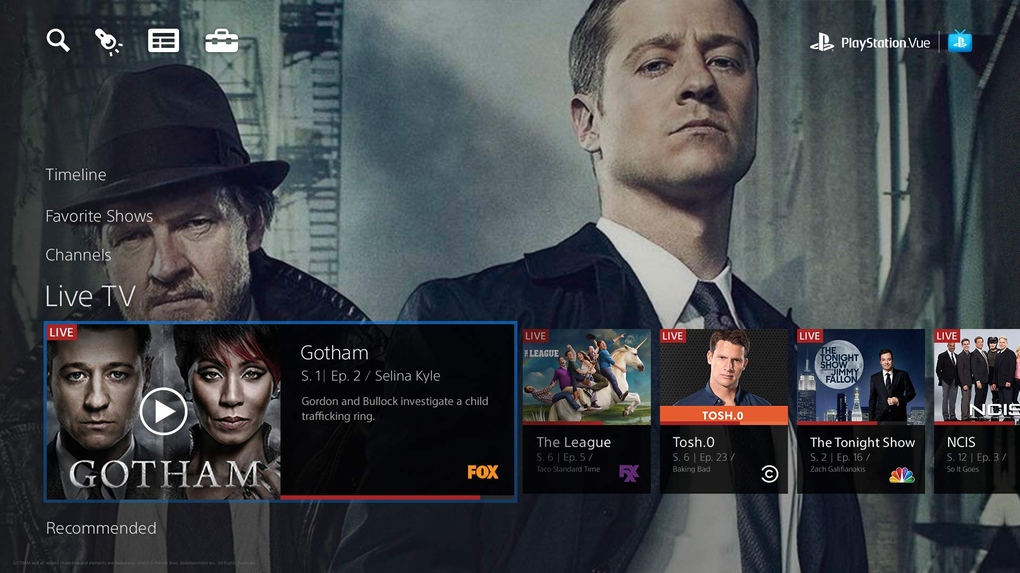
Some things are always going to be opposites. Like yin and yang, darkness and light, PlayStation and Xbox. Both platforms and the companies behind them are driven to do things differently. That’s why, when Sony finally lifted the curtain on PlayStation Vue, a live TV streaming service that runs counter to everything Xbox One has been doing, many of us weren’t surprised.
From the very start, the two companies saw different paths for their consoles. Sony was going to make the PS4 the hip, cool, game-streaming console by gamers, for gamers. When it eventually got its marketing pitch straightened out, Microsoft heralded the Xbox One as the all-in-one entertainment system that sits on your shelf and acts as an intermediary between your cable box and your TV.
But what did that mean for the PS4? That it wouldn’t do anything with cable? That it was too focused on gaming to care what was going on with the cord-cutting crowd? Apparently, no. And PlayStation Vue is living proof.
Sony and share
What Sony has in store for PS4, PS3 and iPad owners is so far beyond interesting that it borders on insane. The Vue service, as far as we understand it, is a TiVo mixed with a Slingbox that delivers live cable channels and has payment plans that go month-to-month instead of yearly contracts. That means you’ll be able to stream live TV when you’re at home, record shows for later (tagged content will be available for 28 days), get access to some on-demand content and, when the service launches in 2015, stream everything I just mentioned to your iPad.
What’s even crazier are the media conglomerates that have already signed on for this plan. CBS, Discovery, Fox, NBC and Viacom have all pledged to be a part of the service, bringing over 75 channels of content with them. Ready for more? The Vue will be the first agnostic television streaming service that separates itself entirely from the cable and satellite TV providers.
It all sounds too good to be true. And things that sound too good to be true usually are.
But Sony has momentum going into this next year of the PS4’s life. They’ve pushed new services like PlayStation Now and Share Play out the door and both of those extensively require a solid streaming infrastructure to work properly, which means there’s hope for this system after all. Microsoft, on the other hand, hasn’t done much with its claim to be the end-all, be-all of home entertainment. Not that the Xbox One failed in its initial quest to sit in between our TV and cable box. It didn’t. It just turns out one year later that Microsoft’s end-goal wasn’t all that ambitious.
Get daily insight, inspiration and deals in your inbox
Sign up for breaking news, reviews, opinion, top tech deals, and more.
Format wars 2.0
The two consoles have always excelled at different aspects of the console. The Xbox 360 offered a better online environment to play games by using Microsoft-owned servers instead of servers owned and operated by the publishers themselves. PSN, however, was free - a price no one had a problem paying. Now, Sony eventually adopted the paid subscription model for the PS4 and doesn’t seem to have any plans of giving that up. But while Microsoft had the edge on the online component of gaming, Sony knew where to put its money when it came to physical media.
Sony knew blu-rays would win out over HD-DVD. Microsoft didn’t give up the fight until two years after the Xbox 360 launched, but in the end the team knew they’d lost. Having the ability to play Blu-rays was a cornerstone of the system, giving it real value to media enthusiasts.
The point of this story, of how Sony learned from its mistakes and how it knew which format to support in the coming generations, is that the company is an unlikely innovator. It doesn’t always get things right (see: the first three years of the PSN, PlayStation TV, and the fact that Vue isn’t announced for PSTV), but sometimes it keys into the next big idea and runs with it.
Whether or not PlayStation Vue is going to the “next big thing” is still up for debate, but the fact that Sony is actively shaping the role it’s playing in your living room bodes well not only for PS4 owners, but for the industry as a whole. All we can do now is wait to see if it lives up to that promise when the service goes live in 2015.
Nick Pino is Managing Editor, TV and AV for TechRadar's sister site, Tom's Guide. Previously, he was the Senior Editor of Home Entertainment at TechRadar, covering TVs, headphones, speakers, video games, VR and streaming devices. He's also written for GamesRadar+, Official Xbox Magazine, PC Gamer and other outlets over the last decade, and he has a degree in computer science he's not using if anyone wants it.
